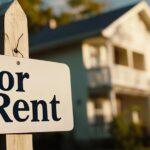A comprehensive analysis by First Street, published in its 12th National Report, “Property Prices in Peril,” provides insight into the observed and projected effects of climate change on the U.S. real estate market. Utilizing peer-reviewed methodologies and macroeconomic modeling, “Property Prices in Peril” estimates a potential $1.47 trillion reduction in unadjusted real estate value over the next 30 years due to climate-related risks.
Drawing on research that examines climate risk awareness, housing market dynamics, climate migration patterns, and demographic and socioeconomic shifts, “Property Prices in Peril” offers a forward-looking analysis of the Housing Price Index (HPI), property valuation trends, and localized Gross Domestic Product (GDP) impacts extending to 2055.
According to the study, residential real estate is the bedrock of the U.S. economy, currently valued at $50 trillion and nearly double the country’s $27.4 trillion GDP. With nearly two-thirds of U.S. adults as homeowners, homeownership is often the ultimate sign of success for many Americans. Historically, population migration and homeownership trends have shown that areas that combined the cost of home ownership and quality of life have grown much faster than areas with less to offer in these places.
These areas have seen increases in severe weather exposure and insurance costs, resulting in a steady increase in the overall cost of homeownership. While the Sun Belt region is the most dramatic example of this phenomena, insurance markets responding to the increasing awareness of climate risk are materially changing the calculus behind home ownership and the desirability of entire communities across the country.
Key Findings
- Climate risk reshaping real estate fundamentals: Climate change is transforming the U.S. housing market through two powerful indirect forces—soaring insurance costs and shifting consumer preferences—which together are creating a feedback loop where climate risks drive population movements and reshape property values across the nation, fundamentally altering traditional patterns of real estate growth and community development.
- Insurance cost acceleration relative to home appreciation: Insurance costs are rising dramatically faster than mortgage payments. From 2013-2022, insurance as a percentage of mortgage payments more than doubled, rising from 7%-8% to over 20% of mortgage costs.
- Anticipated disruptions in Sun Belt growth: Historical population migration to the Sun Belt, which has dominated U.S. population movement for decades, is being fundamentally disrupted by climate change impacts. The three largest Sun Belt states (Texas, Florida, and California) have absorbed over 40% of the nation’s $2.8 trillion in natural disaster costs since 1980.
- Climate-driven macroeconomic assessments: First Street’s Macroeconomic Implications Model (FS-MIM) provides a comprehensive and novel analytical framework that combines the acute impacts of rising insurance premiums with the chronic effects of changing consumer demand and migration patterns to quantify how climate risks will reshape property values and economic vitality across American communities over the next three decades.
- Risk-based insurance premium projections: First Street estimates that unrestricted risk-based insurance pricing would drive a 29.4% increase in average premiums by 2055—comprising a 18.4% correction for current underpricing and an 11% increase from growing climate risks.
- Concentrated premium spikes in coastal metros: The five largest metro areas facing the highest insurance premium increases are Miami (322%), Jacksonville (226%), Tampa (213%), New Orleans (196%), and Sacramento (137%).
- Climate migration driving population redistribution: First Street’s climate migration projections predict that more than 55 million Americans will voluntarily relocate within the U.S. to areas less vulnerable to climate risks by 2055, starting with 5.2 million in 2025.
- Divergent growth trajectories across neighborhoods: The report identifies five distinct neighborhood trajectories in climate migration and insurance increases: Climate Abandonment (26% of census tracts), Risky Growth (31%), Tipping Point (27%), Economic Decline (11%), and Climate Resilient (5%).
- Economic vitality versus climate risk tradeoff: The report indicates that economic strength alone may not be sufficient to retain population in areas facing severe climate impacts, as evidenced by projected “tipping points” in some currently growing metropolitan areas.
- Widespread climate-driven property devaluation: By 2055, 70,026 neighborhoods (84% of all census tracts) may experience some form of negative property value impacts from climate risk, totaling $1.47 trillion in net property value losses due to insurance pressures and shifting consumer demand.
Impact on Property Values
“Climate change is no longer a theoretical concern; it is a measurable force reshaping real estate markets and regional economies across the United States,” said Dr. Jeremy Porter, Head of Climate Implications Research at First Street. “Our findings highlight the urgent need to understand how rising insurance costs and population movements are transforming the economic geography of the nation.”
“Property Prices in Peril” underscores a divergence in property values: high-risk areas are likely to experience significant devaluation, while regions perceived as climate-resilient are poised to benefit from increased demand. This reallocation of economic activity will have profound implications for local government revenues, with at-risk areas facing reductions in property tax income, while more resilient areas stand to gain.
“These results highlight not only the pressing challenges, but also the opportunities for adaptation and innovation in the face of climate change,” said Matthew Eby, Founder and CEO of First Street. “Policymakers, businesses, and communities must act now to mitigate risks and capitalize on the emerging economic opportunities in a shifting landscape.
Click here to access First Street’s report, “Property Prices in Peril.”







